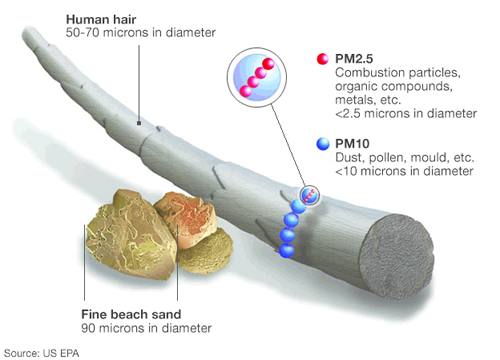Particulate Matter is a mixture of extremely small particles and liquid droplets found in the air. Sources of particulate pollution include woodstoves, fires, wind-blown dust, automobiles, and industry. PM10 refers to particulate matter 10 microns in diameter and smaller, whereas PM2.5 refers to particulate matter 2.5 microns in diameter and smaller. (The average strand of human hair is 70 microns in diameter.)

Health studies over the past decade show that there are harmful effects from breathing PM particles. PM can be inhaled deep into the lungs and can lodge there for weeks and months, aggravating asthma, heart disease, and other respiratory and heart conditions.
PM2.5 National Ambient Air Quality Standard
On December 18, 2006, EPA reduced the 24-hour fine particulate matter (PM2.5) National Ambient Air Quality Standard. By issuing this rule, EPA intends to further protect vulnerable individuals from air pollution in communities across the U.S. DEQ plans to work with Oregon communities interested in developing strategies to reduce particulate pollution.